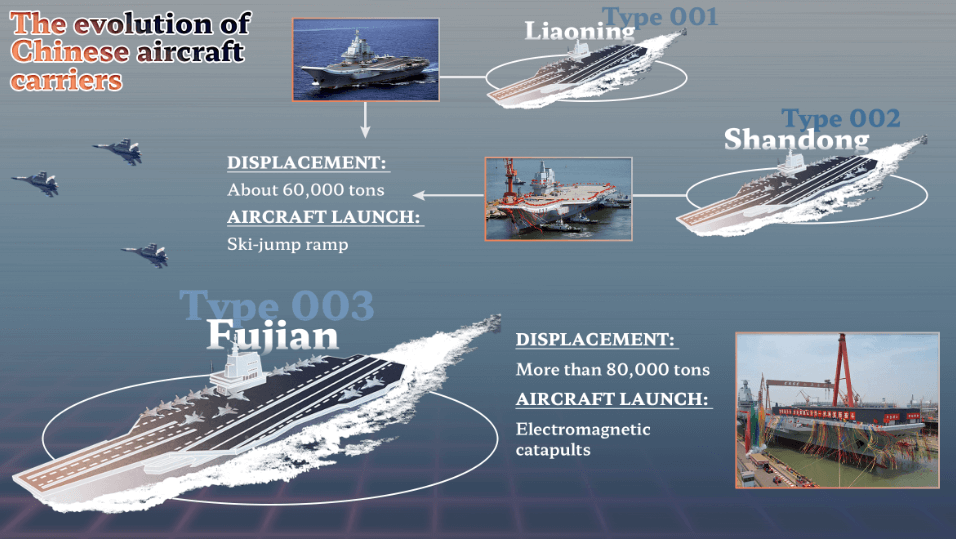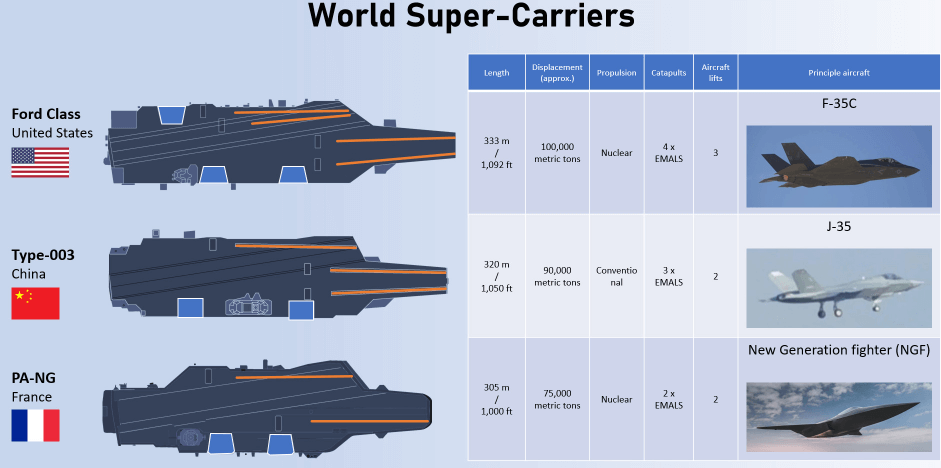Fujian Aircraft Carrier is the latest and most technologically advanced navy ship of the country. It was launched in 2022 and expected to become part of the Navy by the end of 2023.
China’s rapid ascent in the field of military technology and global influence has been nothing short of remarkable. One of the most significant developments in its naval capabilities is the commissioning of the Fujian aircraft carrier.
This colossal warship represents China’s growing maritime ambitions and technological prowess.
In this blog, we will delve into the Fujian aircraft carrier, examining its history, specifications, and the geopolitical implications of its deployment.
Read More: National Aerospace Science and Technology Park

The Rise of Chinese Naval Power
China’s ambition to become a maritime superpower dates back several decades. While its navy, the People’s Liberation Army Navy (PLAN), was primarily a coastal force in the past, China’s leadership envisioned a blue-water navy capable of defending its interests and projecting power worldwide. The Fujian aircraft carrier is a manifestation of this vision.
Historical Background
The story of China’s aircraft carriers begins with the Liaoning, the first operational carrier in the Chinese fleet.
The Liaoning is a refurbished Soviet-era vessel, highlighting China’s intent to learn and adapt to modern naval warfare.
The experiences gained from the Liaoning were critical in the development of the Fujian aircraft carrier.
Specifications of the Fujian Aircraft Carrier
- Design and Construction: The Fujian aircraft carrier is China’s first domestically built carrier. Its construction was a monumental undertaking, involving thousands of engineers, shipbuilders, and support staff. The carrier is named after the Fujian province, underscoring China’s cultural and historical significance.
- Dimensions: The Fujian carrier boasts an impressive size. It stretches over 300 meters in length, making it one of the largest carriers in the world. Its width is approximately 40 meters, and it has a displacement of around 70,000 tons, signifying its substantial weight and capacity.
- Aircraft Complement: The Fujian carrier can carry a diverse fleet of aircraft, including fighter jets, reconnaissance planes, and helicopters. Its flight deck is equipped with electromagnetic catapults and arresting gear, enabling the launch and recovery of various aircraft.
- Propulsion: The carrier is powered by a state-of-the-art nuclear propulsion system. This technology ensures extended operational range and endurance, allowing it to remain at sea for extended periods.
- Defensive Systems: The Fujian carrier is equipped with advanced radar, anti-aircraft, and anti-missile systems, making it a formidable force in modern naval warfare.

Geopolitical Implications
The deployment of the Fujian aircraft carrier carries significant geopolitical implications:
- Regional Power Projection: The carrier enables China to project its military power and assert its territorial claims in the South China Sea more effectively. This has raised concerns among neighboring countries and led to increased tensions in the region.
- Blue-Water Capabilities: With its advanced systems and nuclear propulsion, the Fujian carrier is capable of long-range missions. It allows China to operate in distant waters and engage in international peacekeeping operations, extending its global reach.
- Response to Security Challenges: The carrier enhances China’s ability to respond to security challenges, such as piracy and the protection of its overseas interests, particularly in regions rich in natural resources.
- Global Maritime Competition: The Fujian aircraft carrier places China in direct competition with other maritime powers like the United States. This competition can potentially reshape global power dynamics and influence the balance of power in the Asia-Pacific region.
Challenges and Concerns
Despite the impressive capabilities of the Fujian aircraft carrier, it faces several challenges and concerns:
- Operational Experience: Building and operating aircraft carriers are complex endeavors that require years of experience. China is still developing its carrier-based operational expertise.
- Technological Innovation: Continuous technological advancements are required to keep pace with evolving naval warfare capabilities worldwide.
- Geopolitical Tensions: The carrier’s deployment has exacerbated existing tensions in the South China Sea, leading to concerns about potential conflicts.
- Global Response: China’s maritime expansion is being closely monitored by other nations, particularly the United States. The response of the international community will be a critical factor in shaping future developments.
Conclusion
The Fujian aircraft carrier symbolizes China’s aspiration to become a global naval power. Its advanced technology and expansive capabilities mark a significant milestone in China’s military development.
However, the carrier’s deployment also raises geopolitical tensions and concerns.
As China continues to develop its naval forces, the world watches closely to see how this evolving maritime superpower will impact global security and geopolitics.
Note: The information above might not be accepted 100%. Please verify from your own sources.
For more news, please visit Munafa Marketing.




